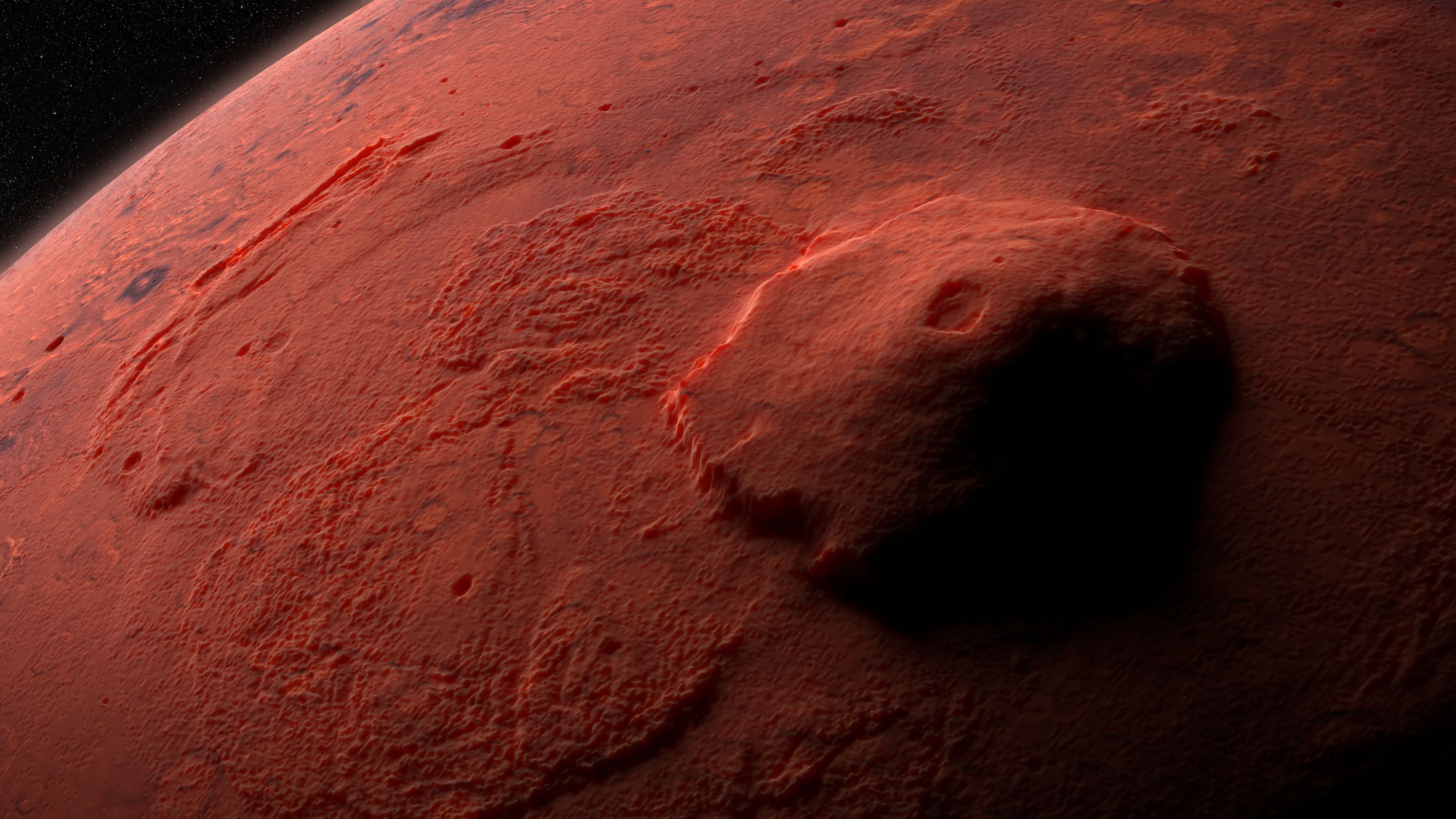Deep-UV Raman Spectroscopy Brings New Clarity to Mars Rover’s Volcanic Glass Analysis
A recent study looked at how deep–UV Raman technology is studying the volcanic history of Mars.
Volcanoes are geological formations that emerge because of fissures or cracks in the Earth’s crust. On Earth, several types of volcanoes exist––composite, cinder cone, lava dome, and shield (1). Volcanoes are important to study because they can offer insight into how a planet’s topography was formed.
As a result, volcanoes can tell us much about a planet’s history and geological changes, which is why much effort goes into studying them (1). This notion holds true for space exploration applications: because there is great interest in sending humans to Mars, scientists are eager to study the volcanic history of Mars and learn more about how the planet’s geology and atmosphere has changed over the years.
Olympus Mons, volcano on planet Mars, largest volcano in the Solar System | Image Credit: © dottedyeti - stock.adobe.com

A recent study shows how deep–ultraviolet (deep–UV) Raman spectroscopy can be used to analyze volcanic glass samples from Mars. Led by Michele Cassetta, this study was conducted by a team of researchers from two Italian universities, the University of Trento and the University of Verona (2). In their study, Cassetta and the team integrated deep–UV Raman technology within the Perseverance rover to study the Martian crust and its chemical and structural properties (2).
Deep-UV Raman spectroscopy is a technique that can reduce background photoluminescence, which is a common issue with visible-light Raman spectroscopy (2). This advancement enables cleaner, high-resolution spectral data essential for analyzing complex materials like silicate glasses, which are common in volcanic and tectonic environments (2). Silicate glasses, often found on Mars as remnants of ancient volcanic activity, hold crucial clues about the planet's geological history and potential for past habitability (2).
By applying deep–UV Raman spectroscopy to silicate glasses of volcanic origin, the researchers were able to observe distinct spectral differences in the short-range structure of the silica network within the glass samples (2). The primary spectral measurements, observed between 825 and 1300 cm⁻¹, offered significant insights into the bonding structure of the glass’s silica network (2).
One of the important aspects to this study is how deep–UV Raman spectroscopy was able to examine tetrahedral-oxygen stretching vibrations in silicate glass. By doing so, the team could count the bridging oxygens that make up the structure of silicate glass (2). Then, the researchers empirically related these findings to the silica content within a sample, which enabled them to predict the composition of volcanic glass in a non-destructive manner (2). This technique enabled rapid screening of volcanic glass samples, determining their structural properties and silica content without relying on invasive or time-consuming chemical analyses (2).
The researchers’ model was validated with various silicate glass samples. These glass samples contained variations in iron, alumina, and alkali content, with the idea being to demonstrate the model’s versatility in distinguishing different silicate compositions accurately (2).
Deep–UV Raman spectroscopy’s integration with the Perseverance rover’s Scanning Habitable Environments with Raman & Luminescence for Organics & Chemicals (SHERLOC) spectrometer helped scientists acquire high-quality Raman data from Mars’s volcanic glasses (2). The instrument’s capabilities align closely with the needs of this research, enabling it to collect Raman spectra directly from the Martian surface while minimizing interference from the background luminescence typically associated with traditional Raman spectroscopy (2).
The research conducted in this study shows the utility of deep–UV Raman spectroscopy in planetary science. Its sensitivity to structural changes and its capacity for non-destructive analysis make it ideal for rapid material screening across fields (2).
Ultimately, this study represents a breakthrough in planetary science, opening new avenues for Mars exploration. As the Perseverance rover continues its mission, the deep-UV Raman spectroscopy approach pioneered by Cassetta and his team may provide essential clues to unraveling Mars's geological and potentially biological history.
References
- Volcano Hazards Program, About Volcanoes. USGS.gov. Available at: https://www.usgs.gov/programs/VHP/about-volcanoes (accessed 2024-10-30).
- Cassetta, M.; Rossi, B.; Mazzocato, S.; et al. Deep-UV Raman Spectroscopy: A Novel Heuristic Method to Characterize Volcanologically Relevant Glasses on Mars. Chem. Geo. 2024, 644, 121867. DOI: 10.1016/j.chemgeo.2023.121867
Nanometer-Scale Studies Using Tip Enhanced Raman Spectroscopy
February 8th 2013Volker Deckert, the winner of the 2013 Charles Mann Award, is advancing the use of tip enhanced Raman spectroscopy (TERS) to push the lateral resolution of vibrational spectroscopy well below the Abbe limit, to achieve single-molecule sensitivity. Because the tip can be moved with sub-nanometer precision, structural information with unmatched spatial resolution can be achieved without the need of specific labels.
Raman Spectroscopy Aflatoxin Detection Enhances Peanut Safety
March 11th 2025A research team from Jiangsu University has developed a Raman spectroscopy-based method to detect aflatoxin B1 (AFB1) in peanuts with improved accuracy and efficiency. By employing a two-step hybrid strategy integrating backward interval partial least squares (BiPLS) and variable combination population analysis (VCPA), the new model significantly enhances the precision of AFB1 detection, providing a more reliable approach for food safety monitoring.